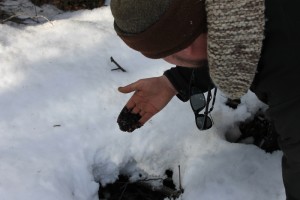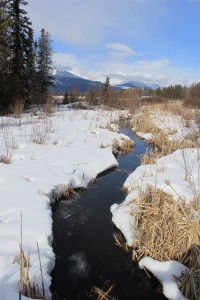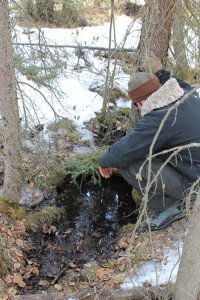
Photo: Korie Marshall
Have you ever walked the Cranberry Marsh trail and noticed some spots where the water doesn’t seem to freeze? These spots might be good examples of what geologists want to see when looking for geothermal potential – spots where the heat beneath the ground is seeping to the surface along faults, fissures, and cracks in the crust.
Bill Kruisselbrink says he and others have seen nests of garter snakes amid shady and cool areas he wouldn’t have expected along parts of the Cranberry Marsh trail. Also, he says the pussy willows along the path to the canoe launch usually bloom in mid-January to mid-February, when you would think it is way too cold for them.
“Something must be warming up their roots sufficiently to fool them into thinking it is spring,” says Kruisselbrink.
The Goat asked Craig Dunn, chief geologist for Borealis Geopower, if there was a connection between Cranberry Marsh and geothermal potential. “That is not a marsh,” Dunn responded, “that is a heat-seep.”

The marsh itself is not what is interesting, says Dunn – it is the area of faulting, which in many cases shows up in the form of streams and rivers, the same way Kinbasket Reservoir as a whole is part of the Rocky Mountain Trench.
Borealis Geopower was planning to be in the Valemount in late April, and Mayor Andru McCracken had tentatively scheduled a meeting with local geothermal enthusiasts on Monday April 21. However Borealis delayed their visit because of how much snow is still on the access roads to their exploration area in the Canoe Reach.
Dunn says he’d be in Valemount April 27th to the 30th, and was hoping to make a presentation to the public on Monday night. One of the things Borealis is hoping to do is test some local water
Photo: Korie Marshall
That whole subsurface story can help Borealis find the best potential for geothermal power generation, and it can help the Village of Valemount find the best potential for direct use of geothermal heat, within and around the village.



